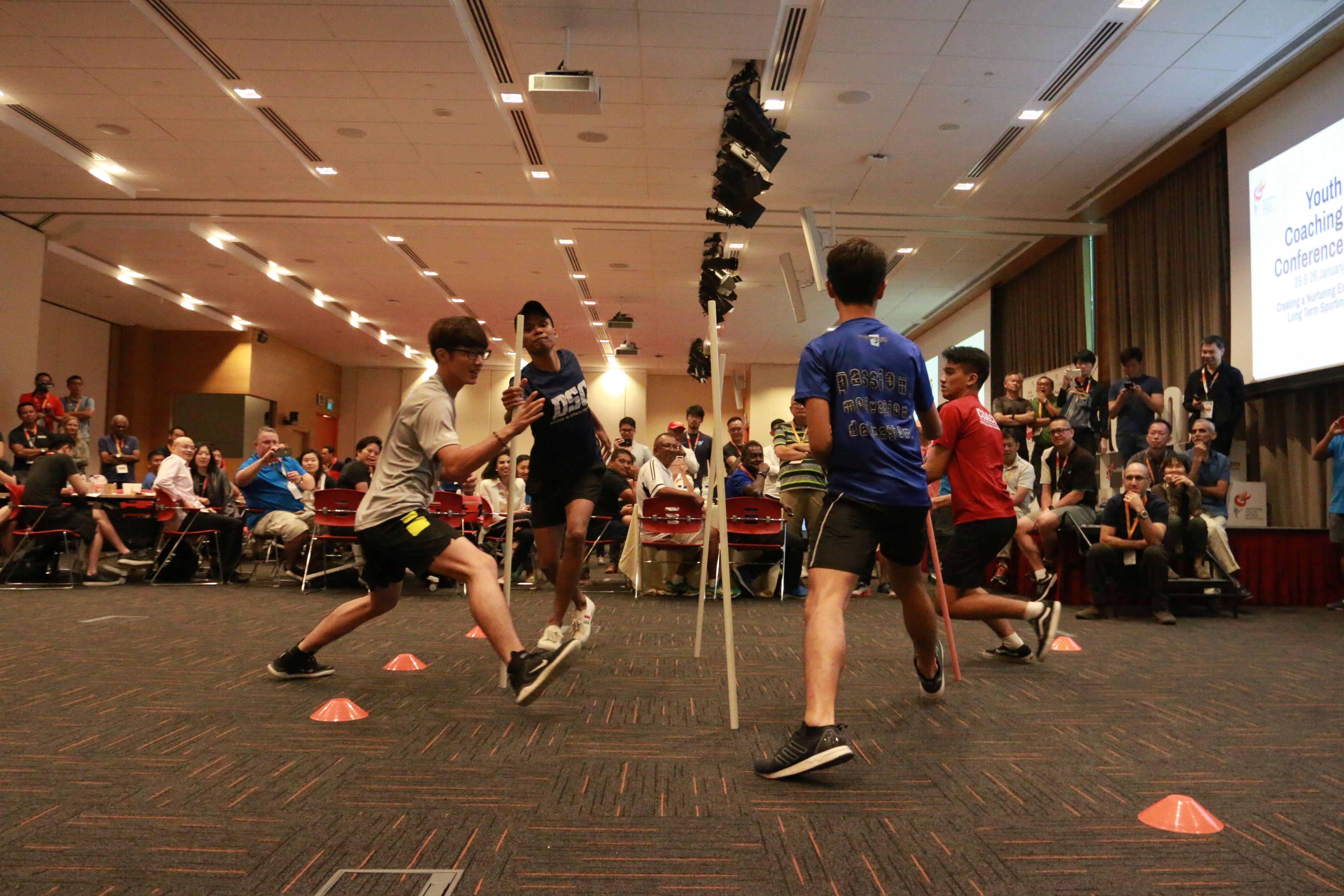Applying the YPD Model for Training Youth Athletes
 Participants taking part in Mr Pichardo's practical demonstrations.
Participants taking part in Mr Pichardo's practical demonstrations.
Mr Andrew Pichardo conducted a workshop where he showed participants how to apply the Youth Physical Development (YPD) model to train youth athletes at the 2019 Youth Coaching Conference.
He pointed out that females will mature earlier than males within the same age group. Therefore, depending on the setting, coaches should consider having separate training sessions for females so that they can progress faster in training.
Coaches should also use relative value instead of an absolute number. “Relative value is the total value divided by body weight. This is what we should aim to improve because it takes into account the athlete’s maturation and size,” Pichardo explained.
“As a kid, you may just want to be the one who is able to lift the heaviest weight. Keeping relative strength in the perspective also encourages younger kids to see where they actually stand. Unfortunately, a lot of people always look at the absolute strength and don’t factor in the body weight.”
Pichardo ran through some practical demonstrations and activities that focused on different drills. The focus was to create activities that were fun, engaging, and have a balance between skill and challenge.
“You can start with an engaging activity for the kids and give them a primer activity for about 5 to 10 minutes. It can also serve as a fun way to warm up depending on the type of activity. Try not to take the fun out of training, because as kids get older, you can always shift the training to be more performance based.”
Pichardo’s demonstrations required athletes to partner up or work in small groups. By doing so, it kept the athletes engaged and also allowed them to practice their interpersonal skills.
The activities touched on drills that helped to improve basic skills such as acceleration, balance, and reactiveness. Depending on what coaches want to work on, he advised planning the activity around the skill.
No matter what type of activity coaches want to include, the main objective Pichardo stressed is to make trainings as fun as possible. “Creativity is the most important factor. There are a lot of activities and ideas shown on social media, so you can filter out the activities that are fun and relevant to your athletes.”